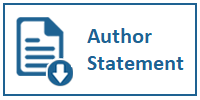Faktor-Faktor yang Mempengaruhi Adopsi Aplikasi Go-Pay Menggunakan UTAUT2
Indonesia
DOI:
https://doi.org/10.31937/si.v10i1.1052Abstract
E-money adoption can lead to faster ecommerce business development in the country. Unfortunately, e-money adoption percentage in Indonesia is still very far behind developed countries. Therefore, more studies about e-money adoption determinant factors in Indonesia are needed to improve
adoption. Sample of this study was 422 Go-Pay users in Indonesia, taken by online form. The data was analized using SEM technique by Lisrel. Result shows that use intention of e-money is determined by hedonic motivation, social influence, habit and price value. Performance expectancy, effort expectancy, and facilitating conditions were found not significant factors
of use intention of e-money. Interestingly, the real usage of e-money is not determined by facilitating conditions but still significantly influenced by habit and use intention of e-money. Result of this study are useful for e-money entrepreneurs who need to improve e-money application usage in Indonesia by focusing on providing features and incentives for user enjoyment and social influence.
Downloads
Downloads
Published
How to Cite
Issue
Section
License
Authors retain copyright and grant the journal right of first publication with the work simultaneously licensed under a Creative Commons Attribution-ShareAlike International License (CC-BY-SA 4.0) that allows others to share the work with an acknowledgement of the work's authorship and initial publication in this journal.
Authors are able to enter into separate, additional contractual arrangements for the non-exclusive distribution of the journal's published version of the work (e.g., post it to an institutional repository or publish it in a book), with an acknowledgement of its initial publication in this journal.
Copyright without Restrictions
The journal allows the author(s) to hold the copyright without restrictions and will retain publishing rights without restrictions.
The submitted papers are assumed to contain no proprietary material unprotected by patent or patent application; responsibility for technical content and for protection of proprietary material rests solely with the author(s) and their organizations and is not the responsibility of the ULTIMA InfoSys or its Editorial Staff. The main (first/corresponding) author is responsible for ensuring that the article has been seen and approved by all the other authors. It is the responsibility of the author to obtain all necessary copyright release permissions for the use of any copyrighted materials in the manuscript prior to the submission.















